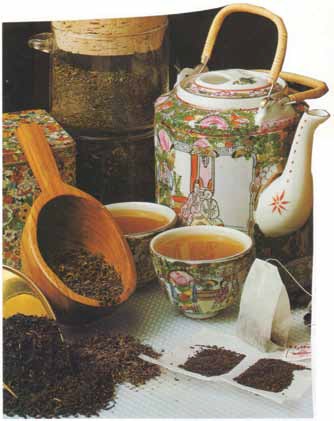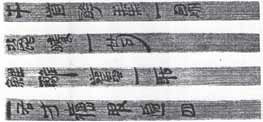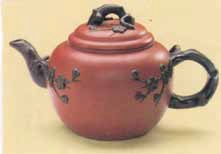
| What is Flavor and Fortune? |
| How do I subscribe? |
| How do I get past issues? |
| How do I advertise? |
| How do I contact the editor? |
Read 12880335 times
Connect me to:
| Home |
| Articles |
| Book reviews |
| Letters to the Editor |
| Newmans News and Notes |
| Recipes |
| Restaurant reviews |
| Article Index (all years, slow) |
| List of Article Years |
| Article Index (2025) |
| Article Index (last 2 years) |
| Things others say |
| Related Links |
| Log In... |
| Authors |
| Categories & Topics |
Tea is Tea-rrific
| by Jacqueline M. Newman |
Beverages
Winter Volume: 2017 Issue: 24(4) pages: 26 to 30
All tea is not the same as all other tea. It was not the same when it first arrived in Europe in the 1600s, not the same when it came to the US brought by or shipped to the colonists two hundred years later. And, all tea sold in the US today is not the same as all other tea sold in the US today. It never was, and it never will be, though lots if it is terrific. No matter how you spell it. There are differences in its leaf preparation, production, and then its final preparation.
Some tea is dried and fired one way, some yet another, and these make differences in its taste when brewed one way or another. If it was dried in the sun, by some heat source, rolled by hand, or not rolled at all this will change this common beverage which is not common at all. Some leaves are packaged damp, others carefully dried; and how it is dried impacts its taste, too. These are some, but not all the reasons tea is not the same when it is purchased. Though all Chinese tea comes from the same plant botanically known as Camellia sinensis, how it is handled, and what if anything is added to it, changes this common tea-rrific most popularly consumed beverage world-wide.

The English love their tea; but they did not love it when taxed, and that was seen in 1773 at the Boston Tea Party in the US. Americans, articularly those of English descent, did dump fifteen thousand pounds of tea leaves shipped into the Boston Harbor. They did so because added to its cost was a special tax. Therefore, they boycotted this tea, did not purchase any from England no matter kind or cost.
In the 1800s, clipper ships brought tea to the US much faster than in earlier times. This did make tea less expensive than when it was taxed or after the tax levy was removed. These speedier ships took some one hundred eighty days to make the crossing. They established speed records for doing so. Because they came so quickly, tea was better priced and more plentiful than ever before; and it became an important and popular beverage in the US. It was less expensive and more loved in the US than ever before. Love for it was also growing worldwide, more than any other hot drink, that is until coffee became the American go-to beverage. In spite of this, it is still not the world’s most popular nor the world’s most consumed hot beverage. Tea still holds this position.
Aside from these speedier ships, what helped the popularity of tea rise were two chaps whose first names were Thomas. One was a New York wholesale distributor with that first name. He enabled sampling and learning about this beverage by giving away samples in small silk bags. The other chap was Sir Thomas. He was a sportsman who made his company, the Lipton Tea Company, very famous. That company did taste-test many teas they planned to sell using seven folk who tasted it fourteen times ranking quality and purity. They called this ‘tea’s good taste.
They ranked three thousand tea varieties that grew in India, Ceylon, or China. These were different grades, different quality levels. Some were different teas. Those seven Lipton tea taste testers tried them all and then selected only some of them to be sold in bulk as plain tea, some as flavored tea, and some as tea they would sell in individual tea bags.
Drinking tea is an old Chinese custom. Elders we know use their finest, oldest, and thinnest tea cups and tea pots when entertaining important guests. They also make and serve the best tea they can afford. Bamboo slips have been found at Han Tomb #1 at the Ma Wang Tui in the Hunan Province; the ones on the second page of this article are a few of the dishes served in those days. A few, but not these, name the teas they served then, too.
As early as the 5th century CE, tea drinkers in China were enjoying tea flavored with mint, orange, even onions, some sold with these ingredients in them. Flavoring was not new then just as it is not new now. Nor were herbal teas which were then usually made with all-natural ingredients, some with tea leaves added, or flowers, bark, seeds, stems, or roots with or without caffeine. But then they were known as a tisane or an infusion; and they were classified and sold as such.

One very specific tea became very popular and still is. Called Earl Gray tea, it was and is a blend of tea leaves with the oil of bergamot, a scented citrus fruit. It gives this tea a specific aroma and taste; and it came about thanks to a recipe given to the Chinese in 1830 by the then British Prime Minister, Earl Grey. Few then or now recognize its Chinese origins.
Another popular tea variety was gunpowder tea, made using green leaves that were rolled into tiny pellets looking like gunshot. Another early tea was not a specific tea nor a way to make any tea; it was called ‘pekoe’ or ‘orange ‘pekoe’ tea, and only referred to the size of their tea leaves. Contrary to most knowledge, neither pekoe nor orange pekoe reflect a quality designation. They refer to the size of the tea leaves and are neither the smallest nor the largest.
TCM practitioners then and now tell us there are many reasons to drink tea. Some include that tea increases blood flow to all parts of the body including the brain, and that it helps speed excretion of alcohol and nicotine from the body. Tea also increases resistance to disease, enhances oxygen flow to every body organ in the body, prevents aging of the skin, combats anemia, preserves tooth enamel thereby decreasing cavity formation, improves lipid metabolism, increases longevity, and may negatively impact weight gain.
There is one tea plantation in China where worker stomachs have two-thirds fewer cancers than do others who do not work in this plantation and yet live nearby. Also, in one county in Taiwan producing lots of tea, the occurrence of cancer is lower than cancer rates in nearby counties. In addition, there is research that shows hypertension, heart failure, and vascular sclerosis lower among those who drink tea compared to those who do not.
As to other facts about tea, one hundred tea bags contain about a half pound of loose tea and they brew about one hundred cups of tea if brewed three to five minutes as their manufacturers recommend. They can brew more for those using these tea bags for a second cup of tea. By comparison, more than two pounds of coffee are needed to make that many cups of coffee, so tea can be less expensive than coffee when costing the same price per pound, which it never does.
You need to do the math and figure costs per cup of these two beverage for yourself and/or your family, depending upon which one you or they drink. And you need to know that some teas are known by more than one name before comparing their per cup costs. One tea with more than one name is Dragon Well Tea, also called Lung Jing Tea. Other teas also have more than one name so do this calculation including all considerations.
There are many ways to brew tea, fewer ways to brew coffee As this article is about tea, readers need to know that squeezing the tea bag of excess liquid releases up to seven times its weight in water, a task omitted if not wrapping the string of the tea bag around the spoon when removing it.
People need to carefully monitor the temperature of the water when brewing their tea and take into account which kind of tea they really prefer as there are many different teas with many different tastes. White tea, for example, is very delicate and should not be made with boiling water. Its tea does absorb a different amount of water than black teas; so measure that before and after brewing it your way. White or yellow teas, even light green teas should be brewed with water no hotter than one hundred and seventy to one hundred and eighty degrees F. That and white, yellow, and green tea drinkers should use only one and a half tablespoons of tea leaves for the best cup of tea while oolong, black, and pu-er tea drinkers usually need hotter temperatures and less tea, depending on the kind of tea and the strength they prefer. All these impact the cost per cup of tea and the amount of tea leaves used.
Water and its temperature makes for differences in different kinds of tea and the strength of the brew. Tea experts recommend bottled water and brewing tea by the clock not the color of the liquid. They say rinsing the teacup with boiling water from the kettle is one first step, discarding it the second step. They say to pour water at the correct temperature and covering the cup with a lid follows. They remind all tea drinkers that a saucer works well.
For most Chinese people, tea is more than a beverage. It is a remedy they believe prolongs life. For the Chinese this is not a new idea; but one written in a volume from the Ming Dynasty (1368 - 1644 CE) titled in Chinese as Houren Xinfa where they recommend that tea be the beverage of choice among diabetics.

As to various forms of tea and ways to serve them, in 1904 and sweltering at the St. Louis World’s Fair, a merchant selling Indian tea poured some over ice and served it creating an instant sensation. Earlier, chefs did smoke tea leaves and mix them with brown sugar to marinate poultry, meat, or fish making these proteins more pungent; tastier, too.
The Chinese like their tea, when they have guests, served in the most classic tea pots and tea cups they own. The one on page one of this article can be such a pot. We do have one such, made with exceptionally thin clay, so thin we can read a printed page through it. The tea pot on this page is made of what is called ‘purple clay.’ That is the color of the clay before it was fired or glazed. Only the black handles and black decor on this teapot are glazed. The inside surface of ‘purple’ pots, the Chinese believe, should never be glazed. They take pride in the older the better, and in using an unglazed teapot on its interior. They tell me the taste of the tea improves with each pot of tea made in such an unglazed purple teapot.
We thank the chefs who provided the special tea recipes, and hope you will make and enjoy many if not all of them using the best tea cups you have. Make different kinds of tea using white, yellow, green, blue, red, black tea, or pu-er tea, then decide which makes the best for you. Many tea colors and tea names have been used since the Ming Dynasty (1368 - 1644 CE). Those called white, yellow, or green have little to no oxidation, the white tea less than eight percent oxidized, oolong teas from twenty to eighty percent oxidized, black and pu-er teas one hundred percent oxidized. Pu-er tea is always fermented first and not always oxidized. One more item, the color is of the liquid brewed not the color of the leaves; is only true for the Chinese, in the US these colors refer to those of the dried tea leaves.
The story of tea, the Chinese say, began when Emperor Shen Nung knelt before a fire boiling water for his tea. It is said that leaves from a nearby tea tree were blown into his drinking cup before he drank its hot water. This we learn happened in 2737 BCE and his enjoyment was from the color, fragrance, and flavor of that hot water.
The Chinese believe the best tea is made from new tea leaves called ‘tea flushes, preferably from the two thin tender young leaves at the tip of a branch with the small unopened bud before them. So these tea leaves are not only the best, but also the most expensive. And brewing tea is, for the Chinese, an indispensable part of their life. They make and use special tea pots made of what they call ‘purple clay,’ use special tea filters, tea bowls, tea pincers, tea cups, tea caddies, tea spoons, and similar items exclusively when they make their tea.
During the mid-Tang Dynasty (618 - 907 CE), Lu Yu, a young monk in a Buddhist monastery did summarize tea making and tea drinking. He wrote Cha Ching, which in English we call The Tea Classic. He understood that emperors, ministers, street hawkers, soldiers, and all Chinese people should drink their tea for enjoyment, and he instructed all on the way to boil the water, brew the tea, and serve it. And most Chinese do just that enhancing its aroma, and flavor.
Tea has vitamins, minerals, essential oils, fluorides, and more, and TCM practitioners say it improves eyesight and alertness, is a diuretic, improves bone density, increases survival of long-term tea drinkers, and those who drink tea after a heart attack. They know and tell us it increases the life span and is why all should drink it; and we do and credit our eighty-five year life to doing so.
Many Chinese drink tea and use its leaves in many of their dishes. More than seven thousand tons of tea leaves were sold on the Tea Horse Road years ago. Many more tons are sold these days. Do you know the kind and where your tea comes from? Do you know this old art has new practices?
Bubble or ‘boba’ tea is a one new way to enjoy tea. First made and enjoyed in Taiwan in the 1980s, these tapioca bubbles are actually made of cassava (which some call manioc, yucca, or arrowroot), and they drink it with or without condensed milk, syrup, or honey. It is so popular that McDonald’s began selling it first in Germany and Austria, now in China, Taiwan, and elsewhere. Mango is the most popular flavor world-wide, hot or cold. If you know it not, do visit a Ten Ren Tea Company facility or another tea company selling it and do try it. We are mango bubble tea fans and do wonder; what flavor you prefer? We like to drink ours when eating any of the recipes below. We drink it alone or with any western snack, and any main dish. Do you have a favorite way to enjoy any tea, bubble or otherwise? Try it with any of the chef-inspired dishes below and tell us your favorite tea and dish, alone or together.
| Sauteed Cod With Tea |
|---|
1 cup uncooked rice, soaked for two or more hours, then covered and steamed for forty minutes
1. Mix the cooked and cooled rice, the packaged soaked
tea leaves, nuts, and dried fruit, and put some of this
mixture between two similar size fish filets. Put a
mixture of the other ingredients but not the lotus
leaf pieces, and tie the stuffed fish pieces loosely with
coarse twine. Repeat until all four or whatever evennumbered
fish pieces and stuffing are used.
|
| Oolong-Smoked Duck Breasts |
|---|
6 duck breasts (or one per person) skin left on is optional
1. Sprinkle each duck breast with some of the salt and let
rest ten minutes.
|
| Tea-Sauced Scallops |
|---|
2 Tablespoons olive oil
1. Heat wok or fry-pan, add oil, and when hot add garlic
and cut scallops and fry on each side for two minutes,
then add orange juice and sir for one more minute.
|
| Pork With Tea Leaves |
|---|
1 whole three-pound crucian or another whole fish, scaled, interiors but hot the cheeks removed and discarded
1. Dry the prepared whole fish with paper towels.
|
| Sauteed Pork and Tea Leaves |
|---|
1 pound boneless pork bell with skin left on
1. Boil pork belly for ten minutes, then discard that water,
cool it, and cut into one-inch squares.
|
| Shrimp in Lung Jing Tea |
|---|
2 or 3 Lung Jing tea bags
1. Boil two cups of water, add the tea bags and boil for
two minutes, then add the shrimp and salt and simmer
for two minutes. Discard the tea bags and remove the
shrimp with a slotted spoon to a small bowl, cover
them, and refrigerate until cool.
|
| Spare Ribs in Tea |
|---|
1 pound pork ribs cut into one-inch individual rib pieces
I. Boil ribs in three cps water for ten minutes, then
drain and rinse them.
|

Copyright © 1994-2025 by ISACC, all rights reserved
Address
3 Jefferson Ferry Drive
S. Setauket NY 11720